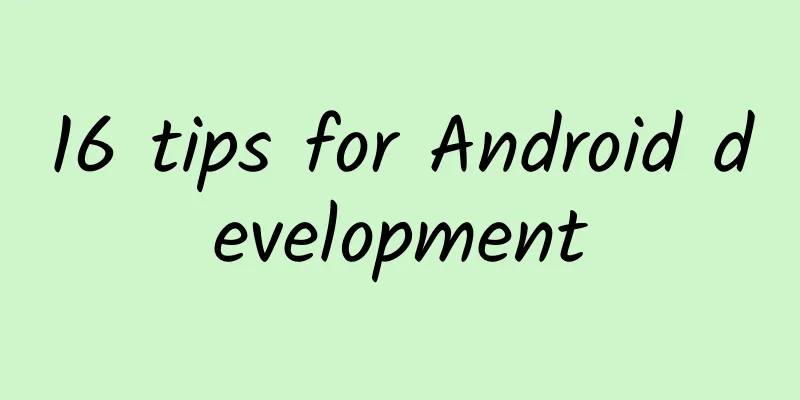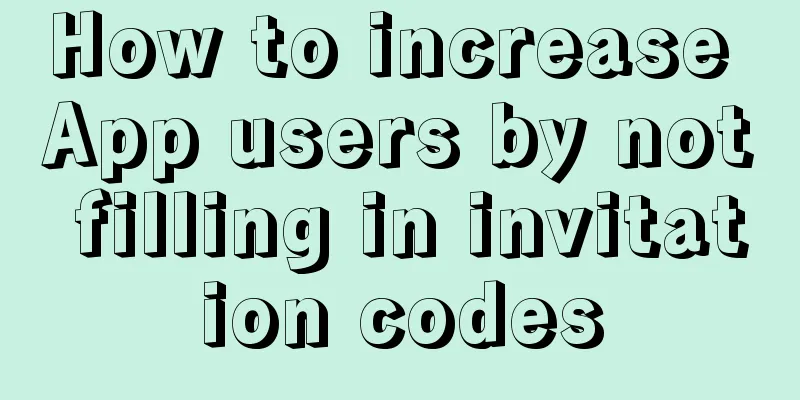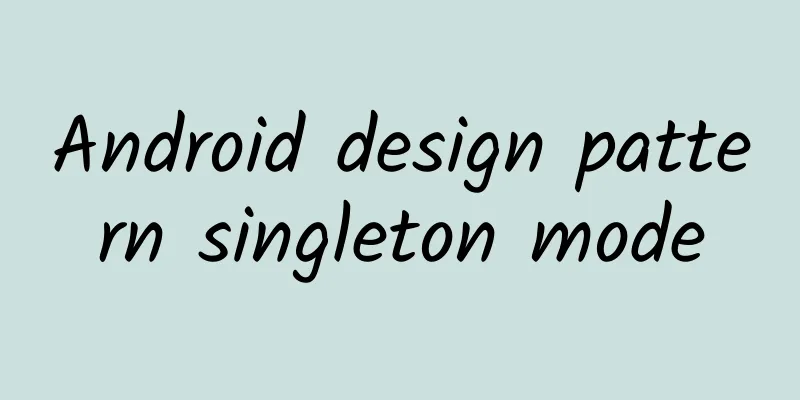16 tips for Android development

|
1. The return value of getTextSize in TextView is in pixels (px). The unit of setTextSize() is sp. So if you use the returned value directly to set it, it will go wrong. The solution is to use another form of setTextSize(), which can specify the unit:
2. When inheriting from View, when drawing the bitmap, you need to put the image into the newly created drawable-xdpi Otherwise, the drawing size may change easily. 3. Underline the text: textView.getPaint().setFlags(Paint.STRIKE_THRU_TEXT_FLAG); 4. ScrollView inherits from frameLayout, so you need to use frameLayout when using LayoutParams. 5. Several ways of network programming in Android: 6. TranslateAnimation(float fromXDelta, float toXDelta, float fromYDelta, float toYDelta) This is the construction method we use most often. float fromXDelta: This parameter indicates the difference between the point where the animation starts and the current View X coordinate; float toXDelta, this parameter indicates the difference between the end point of the animation and the current View X coordinate; float fromYDelta, this parameter indicates the difference between the animation start point and the current View Y coordinate; float toYDelta) This parameter represents the difference between the point where the animation starts and the Y coordinate of the current View; If the view is at point A (x, y), then the animation moves from point B (x+fromXDelta, y+fromYDelta) to point C (x+toXDelta, y+toYDelta). 7.Android provides several ways to access the UI thread from other threads. AsyncTask (recommended)
8.Solution to the problem that Spinner cannot be used in dialog and tabhost 9. Eclipse associated with JDK source code (1). Click "window" -> "Preferences" -> "Java" -> "Installed JRES" (2). At this time, there is a list pane to the right of "Installed JRES", which lists the JRE environments in the system. Select your JRE and click "Edit..." on the side. A window (Edit JRE) will appear. (3). Select the rt.jar file: "c:\program files\java\jre_1.5.0_06\lib\rt.jar" and click the "+" sign on the left to expand it. (4). After expanding, you can see "Source Attachment: (none)". Click this item, click the button on the right "Source Attachment...", and select the "src.zip" file in your JDK directory. 10.Unable to open sync connection! Restart USB debugging in settings 11. EditText cursor position setting problem 12. The Home button in Android is reserved by the system, so you can't use onKeyDown like listening to the back button, but you can add your own processing code based on some events of the activity and view that will be triggered when the home button is pressed. Some people on the Internet say that you can use onAttachWindow to intercept the Home button, but I haven't tried it. 13. When rendering with surfaceView, if you want other Views to appear when needed, you can put surfaceView and other Views in layout, and hide other Views at ordinary times. 14. Use android:imeOptinos to set some interface settings for Android's built-in soft keyboard:
15. Add shadow to TextView
16. How to set the Chinese in TextView to bold? |
<<: As a programmer, you must know these things about computers
>>: XY Apple Assistant: Recommended must-have gadgets for spring outings
Recommend
Successfully completed! What did the first reusable and recoverable satellite do?
On October 24, the National Space Administration ...
Gartner predicts AI spending will reach $644 billion by 2025
Spending on generative artificial intelligence (G...
How to make your fans happy to accept your advertisement
I believe many of you have had this experience: y...
The third batch of astronauts will enter the Tiangong Space Station. How are Chinese astronauts selected?
On May 30, 2023, the successful launch of the She...
[Smart Farmers] Omnivorous "Big Eater" - Beet Armyworm
In recent years, as people's demand for the q...
How to create tens of millions worth of products through content operations?
In my past work experience, I have always been th...
5 tips to improve the conversion rate of information flow accounts!
The conversion rate can, to a certain extent, ref...
Video account IP evolution wealth camp, from 0 to 1, from positioning to monetization to make money (worth 1577 yuan)
Video account IP evolution wealth camp, from 0 to...
El Niño is coming, are you ready?
According to the latest monitoring by the Nationa...
Here’s what you need to know about food shelf life
One minute with the doctor, the postures are cons...
Can elderly care be more efficient? Bio-radar becomes a new type of "guardian"
Whether it is an accidental fall or forgetting to...
Analysis of the promotional methods of WeChat Reading’s “Unlimited Card” activity!
1. Case highlights 1. One gameplay brought at lea...
Comparison of 5,000 years of history between China and foreign countries, understand it in one go!
...
How did smartphones become a diplomatic weapon for major powers?
Recently, there were news reports that Russian Pr...
What has changed and what hasn’t changed under mobile cross-platform technology
1. Cross-platform, which platforms do you want to...









